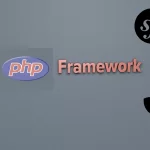In the realm of PHP development, choosing the right framework can be akin to selecting the foundation for a new building. Laravel and Symfony, two powerhouse PHP frameworks, beckon developers with their unique offerings. The challenge lies in discerning which one aligns best with your project’s objectives. In this discourse of the Laravel vs Symfony Comparison, we’ll dissect their features and capabilities, providing you with the insights necessary to make an informed choice. Whether it’s the simplicity and elegance of Laravel or the flexibility and scalability of Symfony, understanding the nuances is key to a successful project.
When the project demands an agile approach and streamlined development, Laravel often emerges as the go-to choice. Its elegant syntax, a rich set of pre-built components, and a vibrant community contribute to its appeal. On the other hand, Symfony, known for its flexibility and scalability, caters to projects that require meticulous customization and modular development. The decision in this Laravel vs Symfony Comparison hinges on your project’s size, complexity, and your team’s familiarity with each framework. Let’s embark on this comparative journey to ascertain the PHP framework that will best propel your project to success.
What Is Symfony?
Laravel vs Symfony Comparison illuminates the distinctive features and advantages of these two prominent PHP frameworks. Symfony, an open-source PHP web application framework, empowers the development of complex and scalable web applications. It originated in 2005 through the efforts of SensioLabs, evolving into one of PHP’s most popular and widely used frameworks. Its acclaim rests on its flexibility, modularity, and a rich set of reusable components.
On the other side, Laravel vs Symfony Comparison offers insights into Laravel, another major player in the PHP framework arena. Laravel, known for its elegance and simplicity, provides a developer-friendly environment, allowing for the creation of web applications with remarkable speed and efficiency.
Both frameworks follow the model-view-controller (MVC) architectural pattern, promoting an organized structure and efficient coding practices. Symfony, with its plethora of pre-built components and libraries, facilitates faster development and application enhancement. Conversely, Laravel’s allure lies in its rapid development capabilities and a rich set of features, making it an excellent choice for projects where time is of the essence.
In essence, Laravel vs Symfony Comparison highlights the strengths and unique attributes of each framework, aiding developers and businesses in selecting the optimal solution for their specific project requirements.
Also Read: Best Laravel Packages To Use In 2023
Main Features of Symphony
Symfony, a powerful PHP web application framework, is laden with a rich set of features that make it a preferred choice for developers. Here are the main features of Symfony:
Modularity and Reusability:
Symfony is designed around a collection of loosely coupled and reusable components. Developers can use these components independently or together, promoting code reusability and efficient development.MVC Architecture:
Symfony follows the Model-View-Controller (MVC) architectural pattern, ensuring a clear separation of application logic, presentation, and data layers. This separation enhances maintainability and testability of the codebase.Symfony Flex:
Symfony Flex is a modern package manager that simplifies the management of bundles, libraries, and extensions. It automates the installation and configuration of packages, making it easier to add new features to the application.Bundles:
Bundles in Symfony are sets of files, typically containing controllers, views, and models, that encapsulate specific features or functionality. Bundles promote code organization, modularity, and easy integration of third-party components.Doctrine ORM:
Symfony integrates with Doctrine, a powerful and flexible Object-Relational Mapping (ORM) system. Doctrine simplifies database interactions by allowing developers to work with database entities as PHP objects.Form Component:
Symfony provides a robust form component that simplifies the creation and handling of forms in web applications. It includes form types, form rendering, form validation, and form data handling.Dependency Injection:
Symfony utilizes a robust dependency injection container, making it easy to manage and inject dependencies across different parts of the application. This promotes decoupling and testability.
Symphony Use Cases
Symfony, with its robust features and flexibility, is suitable for a wide array of web application development use cases. Here are some common use cases where Symfony excels:
Web Applications and Portals:
Symfony is ideal for developing web applications and portals of varying complexities. Whether it’s a simple website or a comprehensive web portal, Symfony’s modular and scalable architecture allows for efficient development and easy maintenance.Content Management Systems (CMS):
Symfony is used to build content management systems where content creation, management, and publishing are crucial. Its modular approach enables the integration of specific components for creating a flexible and tailored CMS.E-commerce Platforms:
Symfony is well-suited for developing e-commerce platforms and online stores. Its ability to handle complex business logic, transactions, user authentication, and security make it a popular choice in the e-commerce industry.Enterprise Applications:
Symfony is frequently employed for developing large-scale enterprise applications that require flexibility, scalability, and maintainability. Its robust set of tools, including caching, authentication, and authorization, cater to the needs of enterprise-level software.
What Is Laravel?
Laravel is an open-source PHP web application framework known for its elegance, simplicity, and developer-friendly features. Developed by Taylor Otwell and first released in 2011, Laravel has quickly gained popularity within the PHP developer community. It facilitates the creation of high-quality, scalable web applications with efficiency and speed.
The framework is built around the principles of expressive, elegant syntax and follows the model-view-controller (MVC) architectural pattern. This structure ensures a clear separation of concerns, making the codebase more organized, maintainable, and easy to understand.
Key features of Laravel:
Blade Templating Engine:
Laravel uses Blade, a lightweight but powerful templating engine, allowing developers to write templates with dynamic content easily. It supports template inheritance and includes control structures for flexible layouts.Eloquent ORM:
Eloquent is Laravel’s elegant Object-Relational Mapping (ORM) system. It simplifies database interactions by allowing developers to work with database entities as PHP objects, enhancing productivity and readability of database-related code.Artisan Console:
Artisan is a command-line interface (CLI) provided by Laravel. It offers a suite of helpful commands for common development tasks like generating code scaffolding, database migrations, and more. Developers can also create custom commands using Artisan.Database Migrations and Seeding:
Laravel provides a convenient way to manage database schema changes and seeding initial data through database migrations and seeders. This helps in version-controlling the database structure and ensuring consistent setups across different environments.Laravel Mix:
Laravel Mix simplifies asset management and compilation by providing a streamlined API for defining Webpack build steps. It’s particularly useful for processing and bundling CSS and JavaScript assets.Middleware:
Middleware in Laravel allows developers to filter HTTP requests entering the application. This provides a way to modify and handle requests and responses at various stages of the application’s lifecycle.
Laravel’s user-friendly syntax, comprehensive documentation, a strong developer community, and a vast ecosystem of packages and libraries contribute to its popularity and make it an excellent choice for a wide range of web development projects.
Laravel Use Cases
Laravel, with its robust features and developer-friendly environment, is suitable for a wide range of web application development use cases. Here are some common scenarios where Laravel is often used:
Web Application Development:
Laravel is ideal for building web applications of varying complexities. Whether it’s a simple website or a more complex application, Laravel’s intuitive syntax and extensive feature set make it well-suited for rapid development.Custom Software Development:
Businesses often use Laravel to create custom software tailored to their specific needs. Its modularity and ability to adapt to unique requirements make it a popular choice for developing bespoke applications.Enterprise Resource Planning (ERP) Systems:
Laravel is used to develop ERP systems that integrate various business processes and functions into a centralized platform. Its scalability and ability to handle complex data models and workflows are beneficial for large-scale ERPs.Customer Relationship Management (CRM) Systems:
Laravel’s flexibility and ease of integration make it a preferred choice for developing CRM systems. These systems help businesses manage customer interactions, streamline sales processes, and improve customer service.Content Management Systems (CMS):
Laravel is used to build CMS platforms, allowing for efficient content creation, management, and publishing. Its extensibility and robust API support contribute to the development of versatile CMS solutions.E-commerce Platforms:
Laravel is well-suited for creating e-commerce platforms and online marketplaces. Its ability to handle transactions, complex product catalogs, user management, and payment integration make it a valuable framework in the e-commerce domain.Social Networking Platforms:
Laravel’s ease of development and features like user authentication, role-based access control, and customizable profiles make it an excellent choice for developing social networking platforms and community-based websites.
Also Read: What is API Design? Principles & Best Practices
Symfony vs Laravel: Head-to-Head Comparison
Symfony and Laravel are two prominent PHP frameworks, each with its own set of strengths and characteristics. Let’s conduct a head-to-head comparison of Symfony and Laravel based on various key aspects:
1. Architecture and Approach:
- Symfony:
- Follows a component-based architecture, allowing developers to use specific components as needed.
- Focuses on flexibility and reusability of components, promoting a modular approach to development.
- Laravel:
- Follows the convention over configuration (CoC) and don’t repeat yourself (DRY) principles.
- Emphasizes simplicity and developer productivity with a pre-defined, expressive syntax and a set of built-in features.
2. Learning Curve:
- Symfony:
- Has a steeper learning curve due to its flexibility and extensive documentation, making it ideal for experienced developers or larger, complex projects.
- Laravel:
- Offers a more straightforward and intuitive syntax, making it accessible to developers with varying skill levels, including beginners.
3. Community and Ecosystem:
- Symfony:
- Has a mature and active community, contributing to its extensive ecosystem of bundles, libraries, and third-party integrations.
- Known for its strong community support and regular updates.
- Laravel:
- Gained rapid popularity, resulting in a robust and growing community that actively contributes to the framework’s ecosystem.
- Known for a vibrant community, extensive documentation, and a wide range of packages available via Composer.
4. Performance:
- Symfony:
- Highly performant, especially in scenarios where fine-grained control over components is required.
- Allows optimization at a granular level, which can lead to efficient and high-performing applications.
- Laravel:
- Generally performs well and is optimized for developer productivity.
- Slightly less flexible in terms of fine-tuning for performance compared to Symfony.
5. Database Support:
- Symfony:
- Offers compatibility with various databases, including MySQL, PostgreSQL, SQLite, and more.
- Integrates well with ORMs like Doctrine.
- Laravel:
- Integrates seamlessly with multiple databases and supports popular options like MySQL, PostgreSQL, SQLite, and SQL Server.
- Uses Eloquent ORM for efficient database interactions.
Also Read: How to Fetch GraphQL Data in Next.js
Symfony vs Laravel: Which Should You Choose?
Choosing between Symfony and Laravel depends on various factors such as project requirements, development team expertise, project complexity, and long-term maintainability. Let’s break down when you should opt for Symfony or Laravel based on specific scenarios:
Choose Symfony if:
Complex, Enterprise-Level Applications:
If you’re building a large-scale, highly complex application with intricate business logic, Symfony’s flexibility and robust architecture make it an excellent choice.Granular Control and Flexibility:
When your project requires fine-grained control over components, or if you need a highly modular and customizable architecture, Symfony’s component-based structure is advantageous.Experienced Development Team:
If your development team possesses experience and proficiency in PHP and can navigate a steeper learning curve, they can fully harness Symfony’s powerful features and flexibility.Integration with Existing Systems:
Choose Symfony if integrating with other systems or platforms is a key requirement, given its extensive compatibility with various databases and third-party components.
Choose Laravel if:
Rapid Application Development (RAD):
For projects that require fast development and deployment, Laravel’s expressive syntax and built-in features can significantly speed up the development process.Ease of Learning and Use:
If your team includes developers of varying skill levels, including beginners, Laravel’s intuitive syntax and excellent documentation make it easier to learn and use.Startup and MVP Development:
For startups or projects where speed to market is critical, Laravel is often a preferred choice due to its focus on developer productivity and quick prototyping.Community and Ecosystem:
If you value a vibrant community, a plethora of packages, and extensive support through Laravel’s ecosystem, it’s a strong reason to opt for Laravel.
Considerations for Both:
Long-Term Maintenance:
Consider the long-term maintenance and scalability requirements of your project. Symfony’s well-structured and maintainable codebase can be advantageous for long-term projects, whereas Laravel’s predictable upgrades ease maintenance.Client and Project Budget:
Assess the client’s budget and project scope. Laravel’s rapid development capabilities might align well with tighter budgets and shorter timelines, while Symfony’s initial setup and customization may require a larger budget.Specific Project Needs:
Analyze the specific needs of your project, including performance requirements, integration needs, and the nature of the application. Choose the framework that best aligns with these project-specific considerations.
In summary, Symfony is ideal for complex, enterprise-level applications and scenarios that demand granular control, while Laravel excels in rapid application development, especially for startups, projects with time constraints, and when ease of learning is a priority. Ultimately, the right choice depends on the unique demands of your project and the balance between flexibility, ease of use, and development speed that you seek.
Conclusion
In summary, the Laravel vs Symfony comparison showcases two formidable PHP frameworks, each with its distinctive advantages. Symfony’s strength lies in its flexibility, extensibility, and robust component-based architecture, making it a solid choice for large-scale, complex applications. It excels in scenarios where fine-grained control and customization are paramount, and its extensive community support is invaluable for enterprise-level projects.
Conversely, Laravel’s charm is in its simplicity and rapid development capabilities. It’s the go-to framework for startups and projects with tight timelines, emphasizing developer productivity and ease of use. Laravel’s elegant syntax and a rich feature set make it an ideal choice for building web applications swiftly and efficiently. In the end, the choice between Laravel and Symfony depends on your project’s specific needs, your team’s skill set, and the balance between flexibility and speed you aim to achieve in your web development journey.















